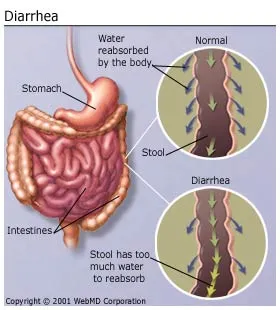Arginine is a precursor for nitric oxide, which has been shown to lower blood pressure, reduce blood clotting and protect against myocardial infarction and strokes. Researchers from the ARS, Texas A&M University, the University of Nevada, and Oklahoma State University, have reported that blood arginine levels increased by 22 per cent after three weeks of drinking watermelon juice with every meal.
"Some studies have reported that high oral doses of arginine were associated with nausea, gastrointestinal discomfort, and diarrhoea in humans. A solution to this potentially severe problem may be the alternative use of l-citrulline, an effective precursor for arginine synthesis," explained lead author Julie Collins in the journal Nutrition.
Indeed, L-citrulline is a neutral amine acid, meaning it does not compete with basic amino acids for transport by cells. Conversion of L-citrulline to arginine consumes ammonia, said Collins, meaning the amino acid could be useful for people with elevated ammonia levels, arginine transport problems, or enhanced intestinal arginine breakdown, as is found in people with stress and infection.
The researchers recruited healthy volunteers (between 12 and 23 per intervention group) and assigned them to receive 0, 780, or 1560 grams of watermelon juice per day, providing a daily L-citrulline dose of 0, 1 or 2 grams. The interventions lasted three weeks and subjects were later crossed over after washout periods of two to four weeks. After the three weeks of intervention, Collins and co-workers report that fasting blood levels of arginine had increased by 11 and 22 per cent for the low- and high-dose juice interventions, respectively.
Levels of ornithine, a product of arginine catabolism, also increased in the high-dose watermelon juice group by 18 per cent after three weeks. "Because the watermelon juice intervention was not continued longer than 3 wk, it is not known if arginine levels plateaued at 3 wk or if there would have been further increases with prolonged administration," stated the researchers.
Previous studies with animals have reported that citrulline administration may be detrimental to levels of other amino acids, but no such results were observed in this human study, they said. "In our study, we found that plasma concentrations of all other amino acids (essential and non-essential amino acids) were not affected by the low or high levels of watermelon juice consumption," wrote the researchers. "These results indicate that the doses of citrulline intake from watermelon juice have no deleterious effects on whole-body amino acid balance in humans."
"These results indicate that citrulline from watermelon was effectively converted into arginine and offers a potential role for exploring the dietary effects of watermelon in regulating whole-body metabolism of energy substrates, improving cardiovascular and immunologic functions, and preventing the aging-associated increase in tissue oxidative stress," they concluded. Watermelon is also a rich source of lycopene, a carotenoid that has been linked extensively to improvements in heart health and risk reductions for a range of certain cancers.
ARS scientists also reportedly found a way of extracting lycopene from the chromoplasts that encapsulate lycopene without damaging the carotenoid, that could see watermelon rival tomato as the optimal source of the nutrient for food and dietary supplements.
















